The scene is winter, 1964.
The snow came down hard. Then, a man with a broom came out . . .
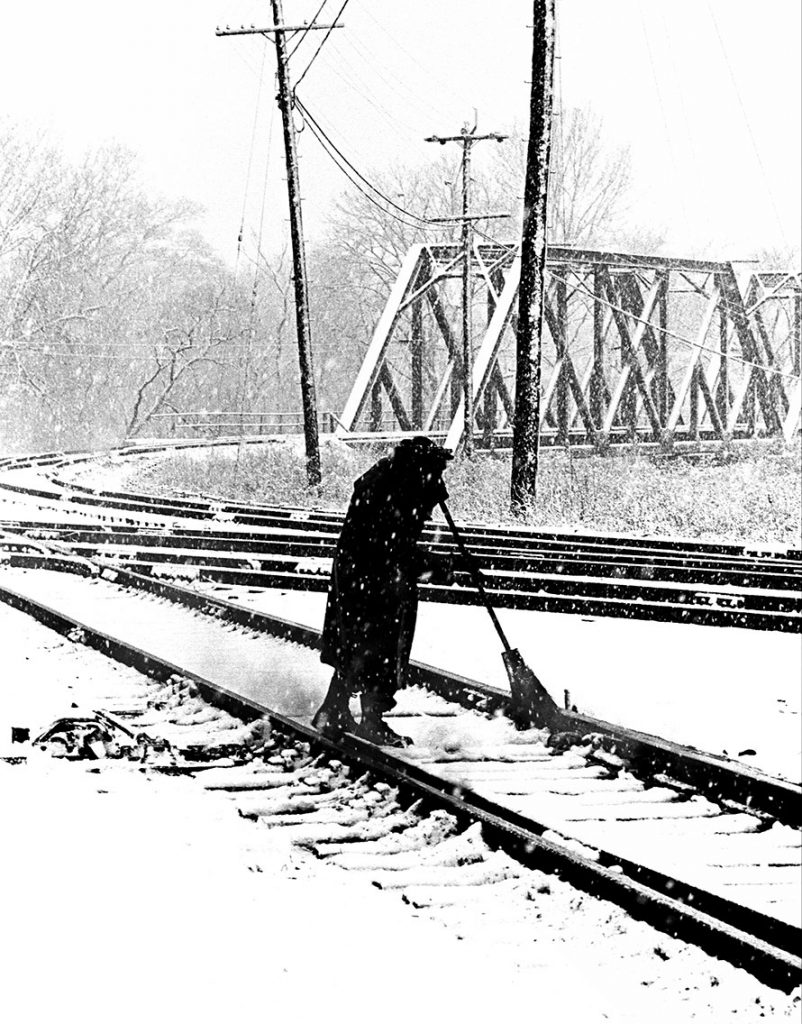
Modern railroading is amazingly high-tech. The BNSF completed installation of PTC, so it knows where every train is. LORAM units pass by, slowly resurfacing rails. Track gangs have laser sighting devices so track is always straight. Tier 4 locomotives maximize horsepower while minimizing pollutants.
It wasn’t always so.
In fact, back-in-the-day grunt work wasn’t that long ago. When it snowed, you called out a man with a broom to keep flange-ways clear of ice. Sure, switch heaters were in use, but they were filled and ignited by the man with a broom. All in all, railroading was very personal.
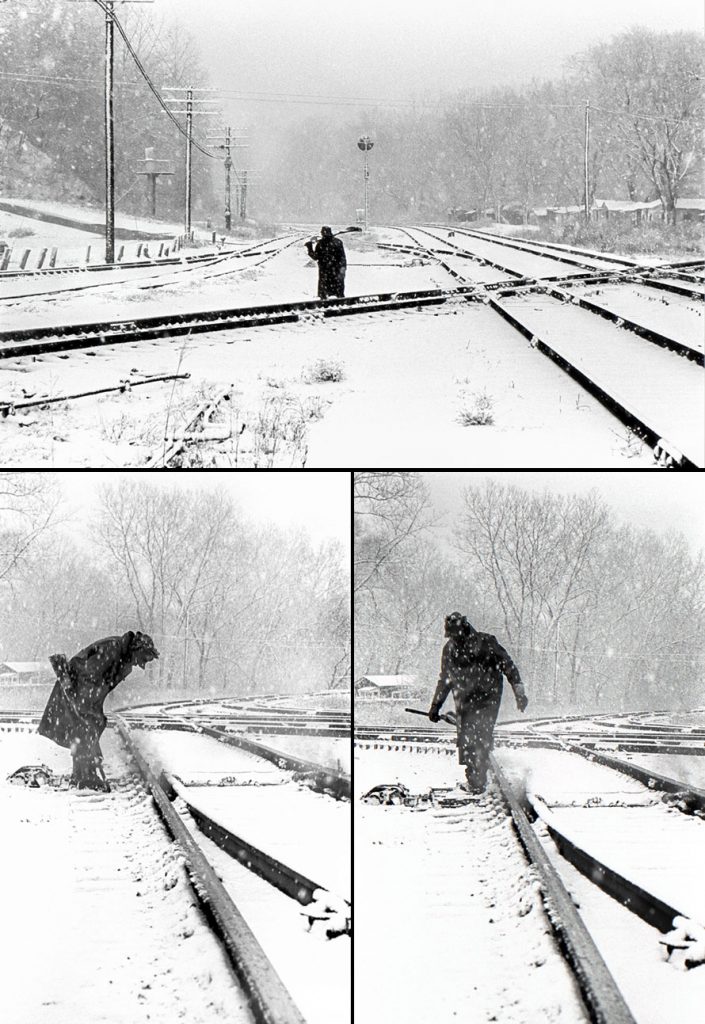
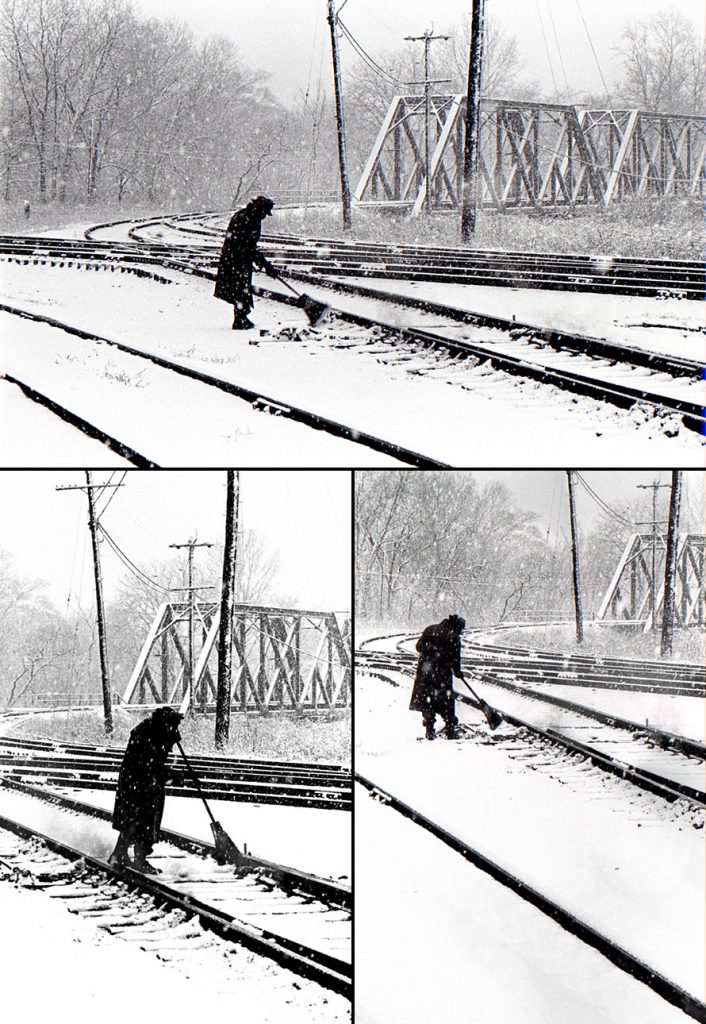
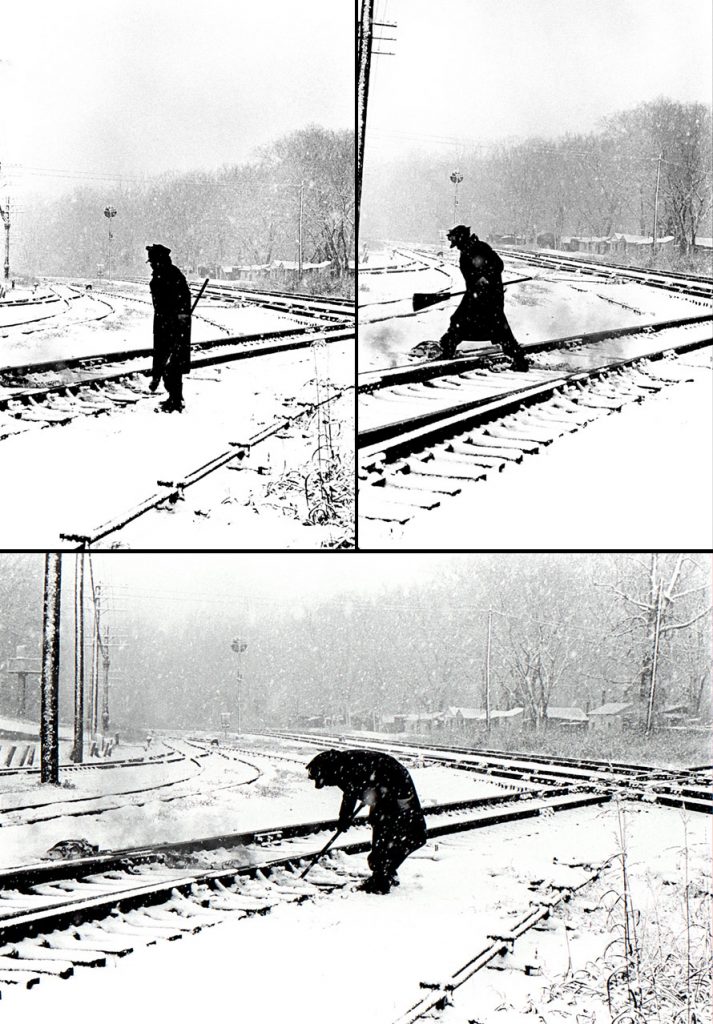
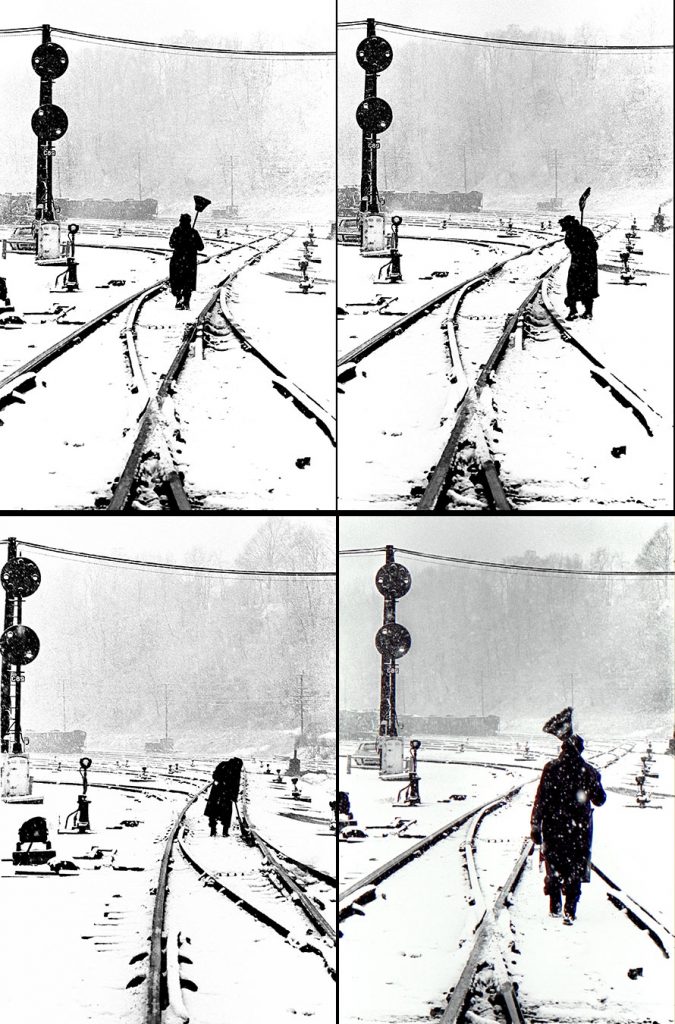
The Norfolk &Western’s Clare Yard was an interesting place to watch the railroad drama unfold. The then westbound end-of-the-line, it extended into the Cincinnati environs to serve a few local customers and to interchange with the six other railroads around the Queen City. Two Pennsylvania mainline tracks crossed the N&W’s one at a many-lever interlocking plant. The yard was short and built upon a hill. Inbound trains came in until the caboose was clear, then doubled back the front half of the train. Outbound trains had to double out of the yard.
Managing an outbound train was quite the production, especially at night. After crossing the Pennsy, the N&W tracks curved sharply to the right, crossed a small river, then curved to the left. The engine crew was far out of sight for the ground crew. How to communicate while making the double? With lights mounted on utility poles. Using special blink codes, the hind-end crew told the engineer to stop, back, back slowly, stop, cut in the air, air test, and depart. It was quite the sound on a dark, cold night.
Making up a train in a driving snow is neither fun nor easy.
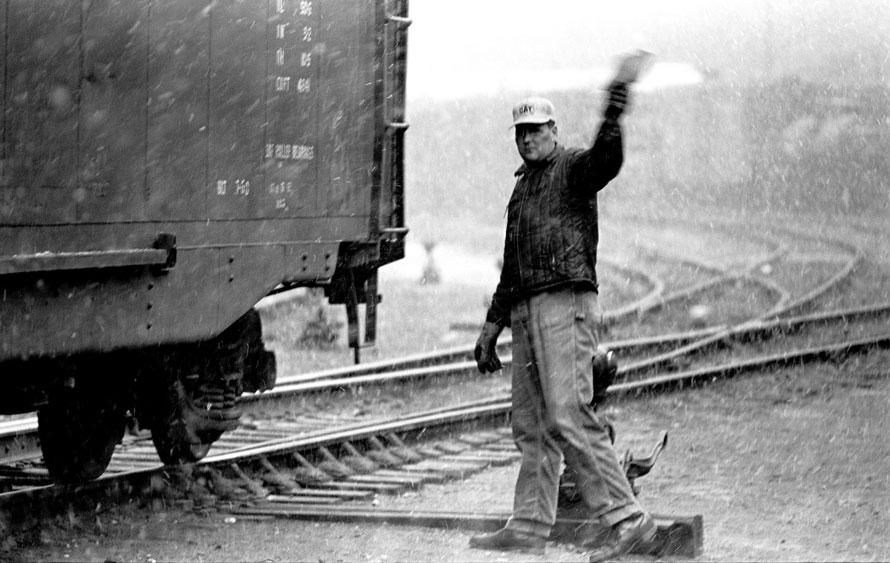
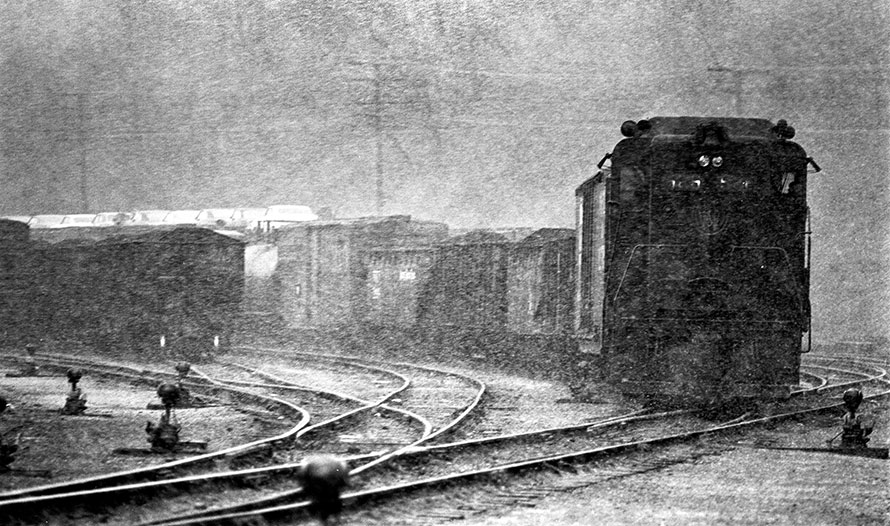
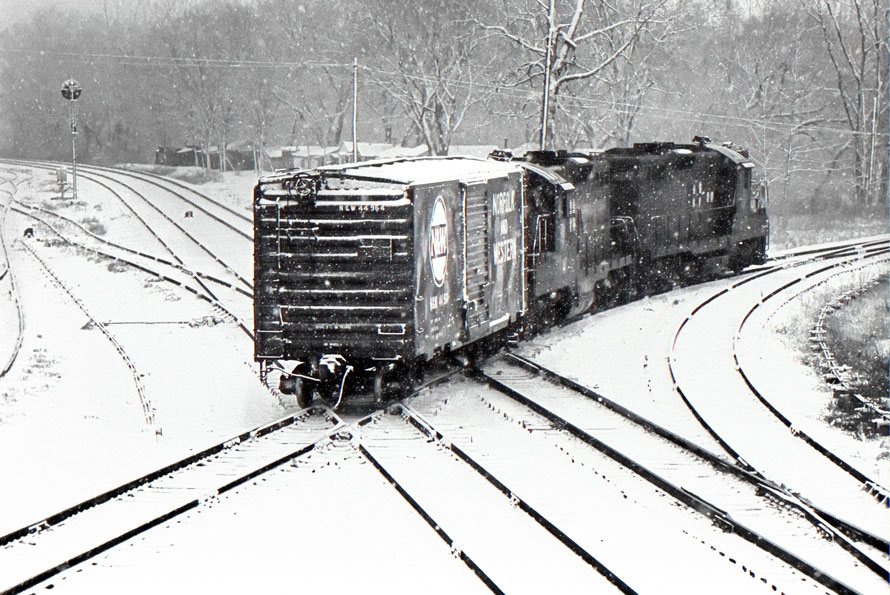
Four Geeps finally departed the yard. You can see the communication lights on top of the poles. Blink. Blink-blink. Blink-pause-blink-blink. Stop, backup, easy . . .
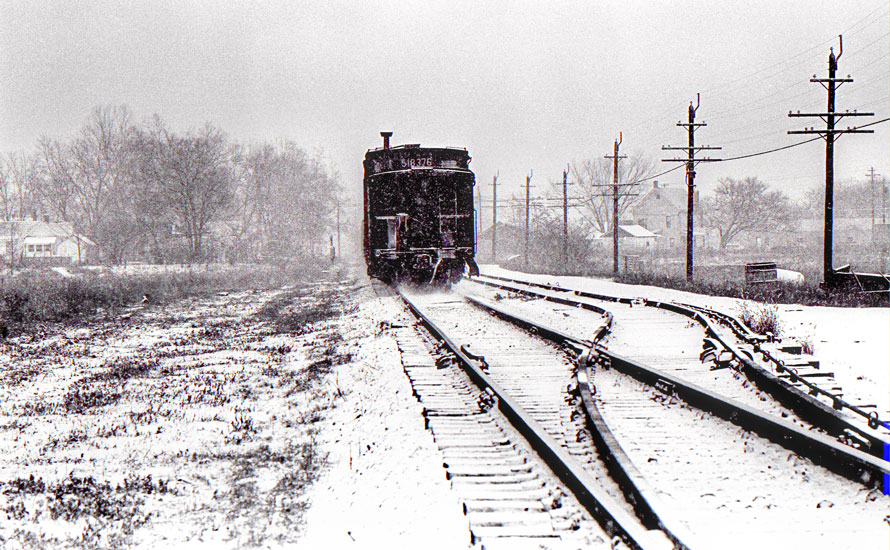
William R. Jolitz – Photographs and text Copyright 2019

Wonderful!! Great photos and text. So enjoyable. Thanks. I love this railroad site! Thanks
William, a great tribute to the trackmen and laborers who made the railroad run, almost always out of sight and without recognition of the passengers and general public. The photos convey the sense of cold and solitude as the switches are swept clean, and once finished, must be swept again. Thank you.
Great series of photos! So glad that so many were taken as this is now history. Would make a great operation to model. Thanks for this.
This site is amazing. I enjoyed it immediately !
Funny thing is some of these past things still happen on little shortline railroads. The one I work for we still clean switches with brooms and shovels and also leaf blowers. None of the fancy high tech things of today on our railroad.
William, this is beautiful series of photos. A story in pictures indeed.
Great story. I kept looking at the first picture said to myself this looks like Clare Yard back in the day. Then I start reading below and it is. Great history there and very true. I would sit down there and watch trains back in the 60s and 70s fishing under the bridge during the day and watching trains above the hillside in Mariemont as well.
Too many railfans forget that more than anything else railroading is PEOPLE. GREAT pics!
This is awesome. The short yard where the train has to back up to collect the second (or third) section is what I have to do on my model rail road yards. It is prototypical!!. The exit to the yard is out of sight of the yard. Now I have a prototypical way of building a signaling system. How cool. I love these kinds of articles. This kind of information is impossible to find in normal publications. Keep up the good work
Have always loved the railroad people photos……